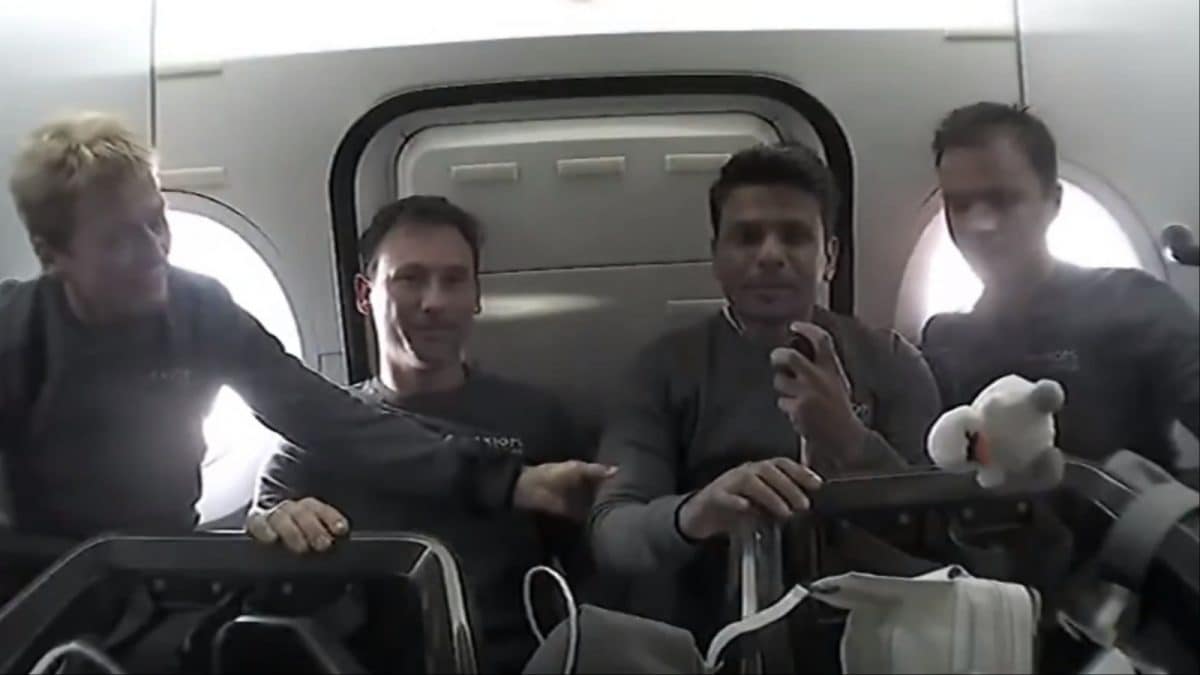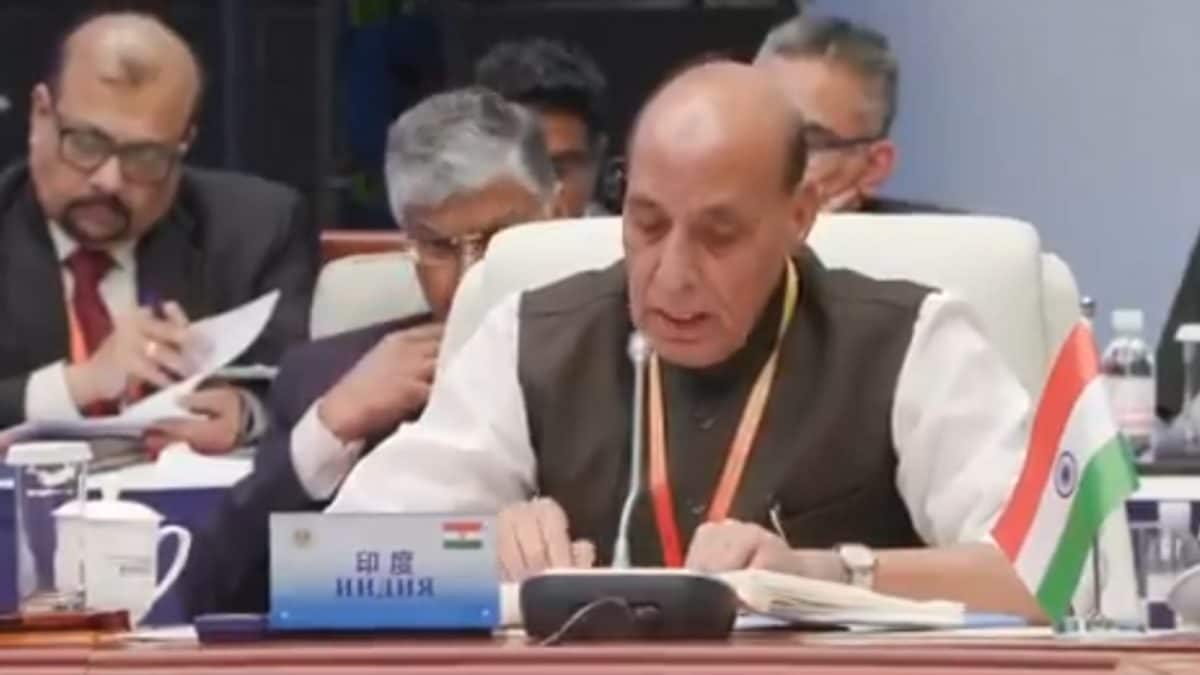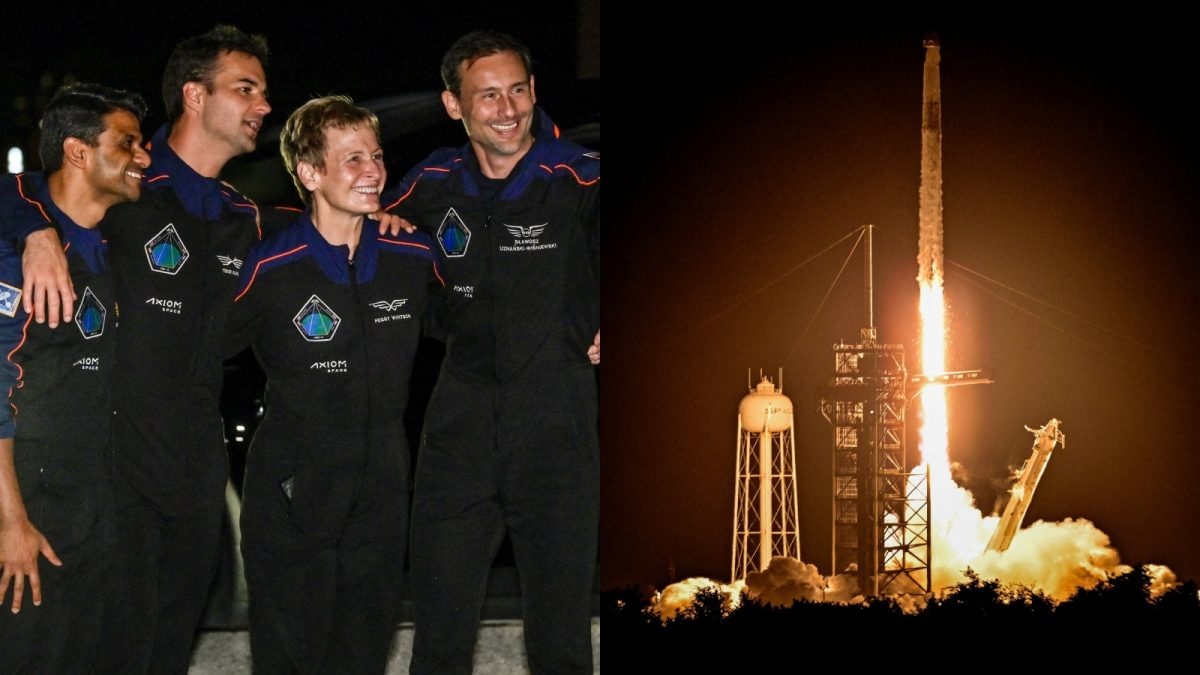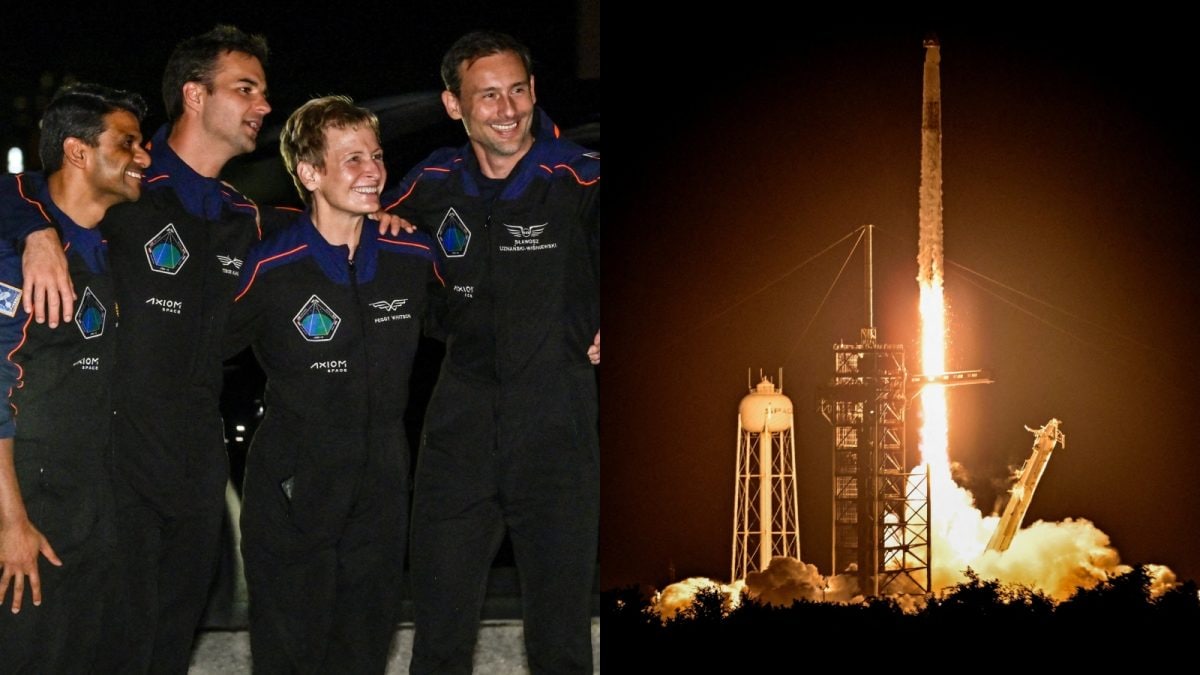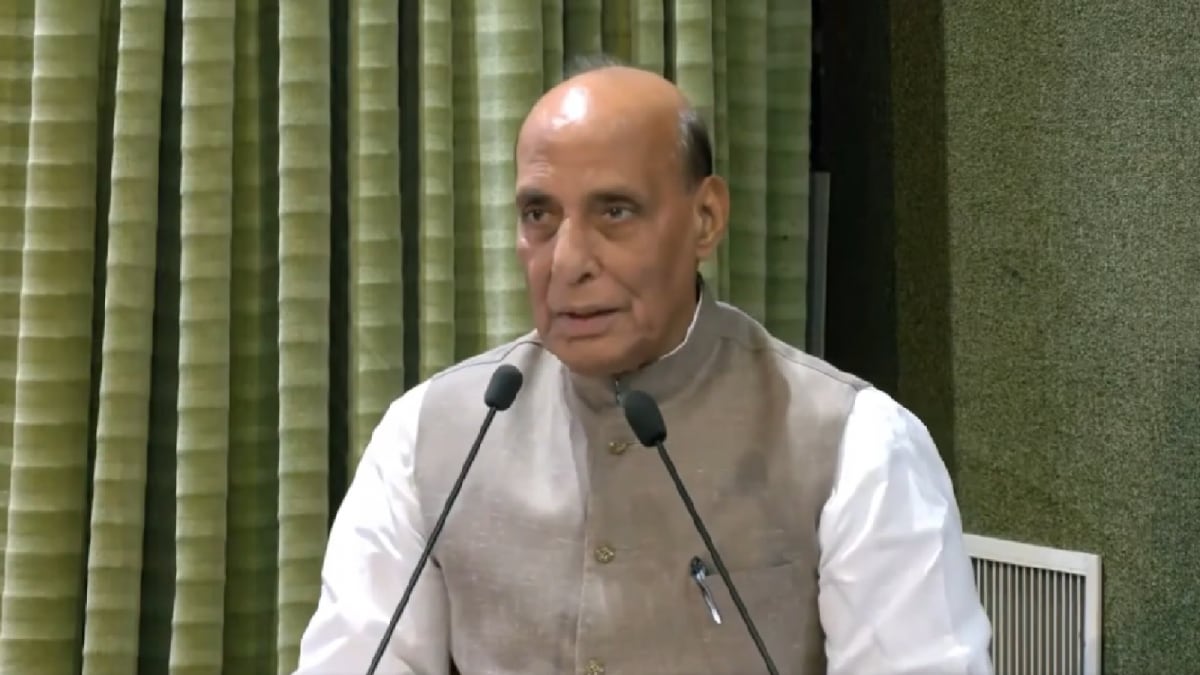Electric air travel has officially arrived. The Alia CX300 aircraft flew 130 km from East Hampton to New York's JFK in just half an hour. The one-way, 35-minute trip, which cost passengers only $8 (around Rs 700), heralds a new era of cheap air travel.

The electric aircraft approaches landing in New York with the iconic Statue of Liberty in the backdrop. (Image: Beta Technologies/AI-edit India Today)
When the supersonic Concorde in 1976 made its first commercial flight, breaking the sound barrier, it marked a watershed moment in aviation history. Earlier this month, civil aviation took another giant leap, perhaps the most significant since. As Beta Technologies' Alia CX300 electric aircraft touched down at New York's JFK Airport with four passengers, it marked a game-changing moment for electric flights, which is the future. The future isn't coming, it just landed.
The 130-km flight from the Long Island's East Hampton to New York, completed in just 35 minutes and costing passengers only $8 (less than Rs 700), not only ushered in clean and comfortable flying but also marked the beginning of a new era of affordable air travel.
In India, urban-centric electric air taxis, unlike the Alia CX300, which requires runways, are prepping for take-off, with trials set to begin by 2026.
ELECTRIC FLIGHT IS USHERING IN A COST REVOLUTION
The maiden passenger flight of the Alia CX300 aircraft from East Hampton to JFK Airport showcased unprecedented cost efficiency.
By road, the 130-km journey typically takes over 2 hours by car, during peak traffic, costing around $30-$40 in fuel and tolls for a standard vehicle. Train travel, via the Long Island Rail Road, takes about 2 hours and 45 minutes from East Hampton to Penn Station, with fares ranging from $20-$30 one-way.
In contrast, the Alia CX300 covered the distance in 35 minutes at a cruising speed of approximately 222 kmph (120 knots), for just $8 (Rs 688) in electricity costs.
This was significantly cheaper than a modern fossil-fuel-powered aircraft, which could cost $150-$200 in fuel for a similar short-haul flight, as they are propelled by expensive jet fuel. The electric aircraft's low operational costs make it a game-changer for short-distance travel.
Travel options for the 130-km East Hampton–New York City route reveal how electric aviation outpaces road, rail, and contemporary air travel in both cost and time.
| By Car | 2 hours | $30–$40 | Petrol/Diesel/Electricity |
| By Train (LIRR) | 2 hours 45 min | $20–$30 | Electricity/Diesel |
| Conventional Aircraft | 30minutes | $150–$200 | Jet Fuel |
| Alia CX300 (Electric Aircraft) | 35 minutes | $8 (Rs 688) | Electricity |
Electric flights are ideal for short-haul routes, as they offer low costs and efficiency where conventional flights are often seen as impractical due to high fuel and operational expenses. With the improvement of battery technology and range, the potential for electric aviation is limitless.
WORLD'S FIRST ELECTRIC FLIGHT LANDED IN NEW YORK'S JFK
On June 3, Beta Technologies' Alia CX300, piloted by CEO Kyle Clark, made history by landing at JFK Airport after a 35-minute flight. The flight carried four passengers, including Republic Airways President Matt Koscal and Blade Air Mobility CEO Rob Wiesenthal, reported the US-based FLYING Magazine.
Electric aircraft are easier on the earth too, producing little to no carbon emissions compared to conventional jets.
"This is a 100% electric airplane that just flew from East Hampton to JFK with passengers on it, which was a first for the New York Port Authority and the New York area," Clark told Fox News.
The quiet operation, unlike in contemporary passenger jets, allowed passengers to converse easily inside the cabin. And the regional turboprops are extravagant in decibels.
ABOUT THE WORLD'S FIRST ELECTRIC AIRCRAFT
The Alia CX300, which marked the maiden flight, takes-off and lands conventionally, and is designed for short-haul passenger, cargo, and medical missions.
With a range of 460 km (250 nautical miles) on a full charge, it cruises at a maximum speed of 222 kmph.
Compared to contemporary fossil-fuel-powered aircraft used on small routes, which have a similar range and burn $100-$150 in fuel per hour, the CX300's $8 per flight energy cost is revolutionary.
The aircraft works like a super-quiet electric car with wings. Its five electric motors power propellers (like turboprops, but smaller), fixed wings, and landing gears let it operate like a regular plane.
Its near-silent operation enhances passenger comfort, and eliminates the need for headsets. The zero-emission profile aligns with environmental goals too.
Other electric aircraft (in trail or development stages) for similar short-haul sectors, though varying in vertical take-off capability, propulsion-type, range, or speed, offer comparable cost efficiency and environmental benefits.
Legacy manufacturers such as Airbus, Boeing, Embraer, Honda, Hyundai, and Toyota have also made limited strides toward electric aviation, which are now focusing more on developing components and subsystems.
THE FUTURE OF ELECTRIC AVIATION
Beta Technologies, whose aircraft achieved the feat, has plans to achieve full FAA certification for the Alia CX300 by 2026.
It's also building a network of 46 charging stations across the US, with 50 more in the pipeline, to support its aircraft, reported FLYING Magazine in February.
Meanwhile, Beta has secured orders from Air New Zealand, UPS, and Bristow for both its regular runway-base and the 'electric vertical take-off and landing' (eVTOLs) models. The Alia CX300 belongs to the former category.
Apart from Beta, several electric aircraft manufacturers like Joby Aviation in the US and Elfly Group in Norway are advancing innovative projects, with significant investments and infrastructure development. This is poised to scale up the viability of electric aviation.
Electric aviation's future hinges on scaling infrastructure and improving battery range, but regulatory support and international consensus remain a tricky proposition for now. Anyway, domestically, urban air mobility is set to transform short-haul travel, within a decade at most, was underlined by Rick Cotton, the executive director of New York's Port Authority.
INDIA TO LAUNCH INDIGENOUS AIR TAXI BY 2026
India is advancing toward urban air mobility, with the government planning trials of an indigenous air taxi service by 2026.
The Centre is set to introduce an indigenously developed air taxi service, with trial runs expected to begin by 2026, Union Civil Aviation Minister Kinjarapu Ram Mohan Naidu revealed at an event in January.
Naidu said, "eVTOLs are set to transform urban mobility in India, and we are working tirelessly to make this a reality by next year. With the DGCA already issuing guidelines on vertiports, airworthiness, and air taxi licensing, India is moving fast towards a future of advanced air mobility".
Meanwhile, US-based Archer Aviation, backed by Stellantis and Boeing, is also working with India's aviation watchdog DGCA to secure regulatory approvals ahead of its own trial flights next year, reported news agency Reuters.
While eVTOLs/air taxis are meant for short urban hops with vertical take-off and landing, runway-based electric aircraft like the Alia CX300 have the liberty to cater to slightly longer regional routes.
Fifty years ago, the wings of the Concorde were, unfortunately, clipped too soon, but not before proving that a supersonic passenger flight was possible. It ignited human imagination and laid the foundation for future innovations. Now, with the electric flight taking-off, there's hope it becomes aviation's own Apollo moment, and its wings soar.
- Ends
Published By:
Sushim Mukul
Published On:
Jun 26, 2025

 6 hours ago
6 hours ago




